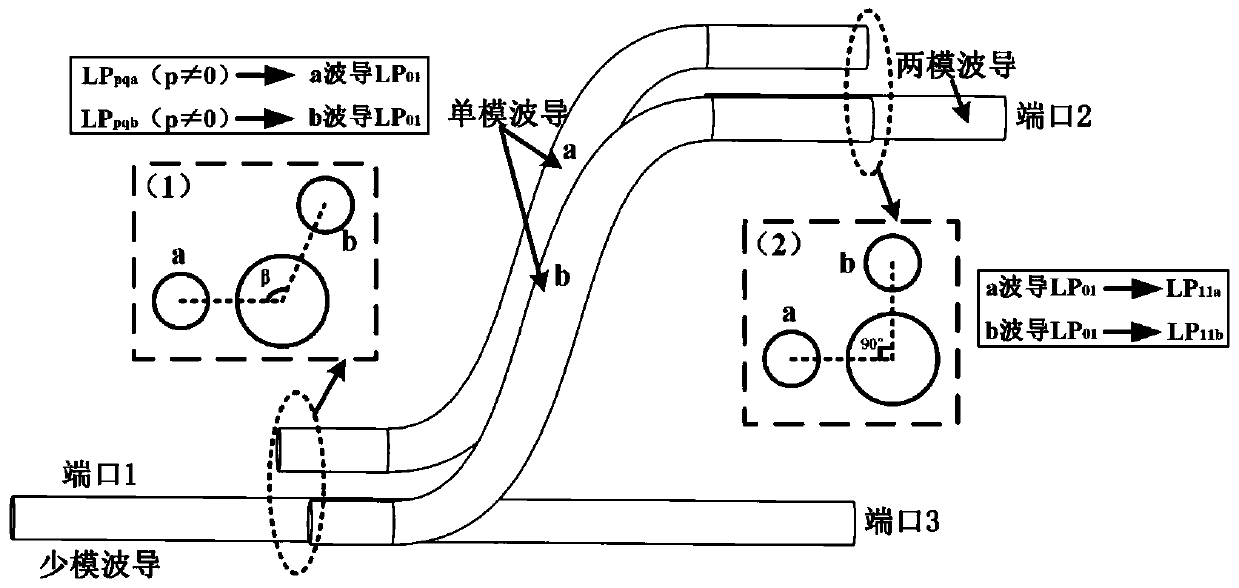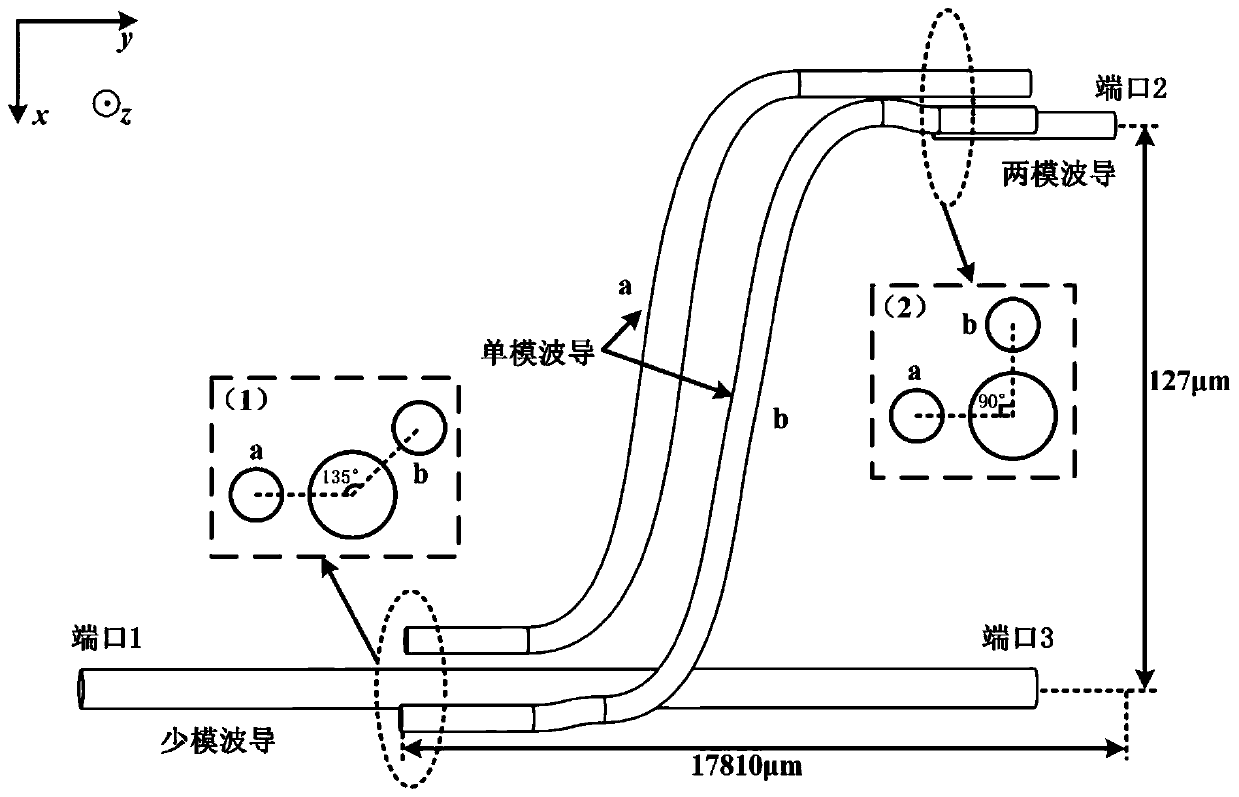Mode demultiplexer of degenerate mode group based on spatial three-dimensional waveguide
A demultiplexer and mode group technology, applied in the field of demultiplexers, can solve the problems of difficult device implementation, long coupling area, and strict directional coupling conditions, so as to avoid digital signal processing, improve coupling efficiency, and reduce Realize the effect of cost
- Summary
- Abstract
- Description
- Claims
- Application Information
AI Technical Summary
Problems solved by technology
Method used
Image
Examples
Embodiment Construction
[0036] In order to make the purpose, technical solution and advantages of the present invention clearer, the following degenerate mode group LP 21 The manufacturing method of the demultiplexer is taken as an example and the present invention is described in detail in conjunction with the accompanying drawings. It should be understood that the specific examples described here are only used to explain the present invention, not to limit the present invention.
[0037] image 3 is the degenerate pattern group LP 21 Example of demultiplexing, in this case a few-mode waveguide supporting four mode LPs 01 , LP 11 , LP 21 and LP 02 . The entire device design is in borosilicate glass with a background refractive index of 1.4877, the refractive index of the few-mode waveguide is 1.499, and the diameter is 12.18 μm; the refractive index of single-mode waveguides a and b are both 1.4928, and the diameter is 8.2 μm ; The refractive index of the two-mode waveguide is 1.499 and the d...
PUM
 Login to View More
Login to View More Abstract
Description
Claims
Application Information
 Login to View More
Login to View More - R&D
- Intellectual Property
- Life Sciences
- Materials
- Tech Scout
- Unparalleled Data Quality
- Higher Quality Content
- 60% Fewer Hallucinations
Browse by: Latest US Patents, China's latest patents, Technical Efficacy Thesaurus, Application Domain, Technology Topic, Popular Technical Reports.
© 2025 PatSnap. All rights reserved.Legal|Privacy policy|Modern Slavery Act Transparency Statement|Sitemap|About US| Contact US: help@patsnap.com



